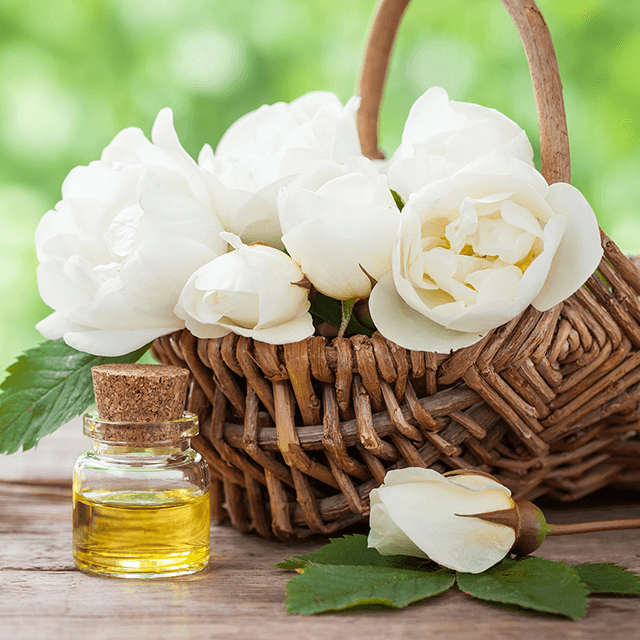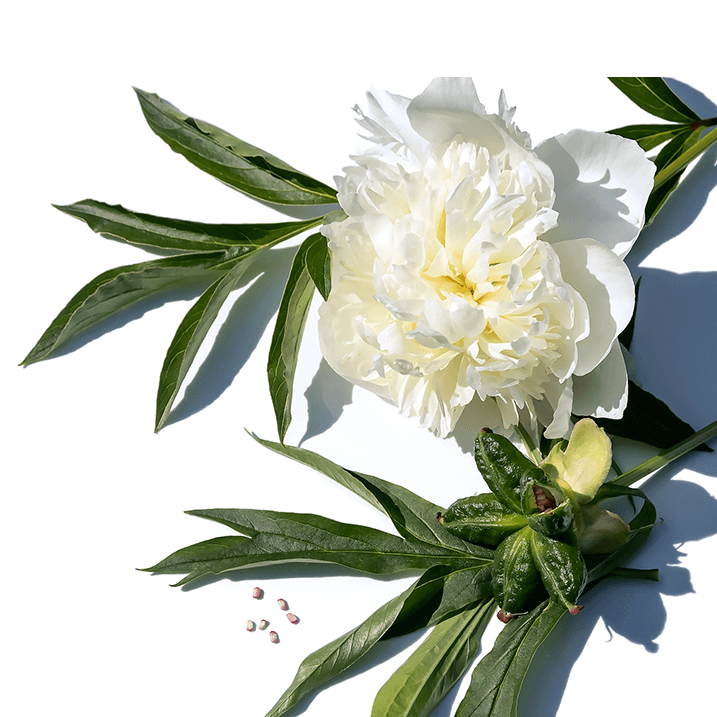A. Definition of Peony Seed Oil
Peony seed oil, also known as peony oil or mudan oil, is a valuable natural oil extracted from the seeds of the peony plant (Paeonia suffruticosa). The peony plant is native to China, and its seeds have been used for centuries in traditional Chinese medicine and culinary practices. The oil is extracted from the seeds through a meticulous process to retain its beneficial properties and distinct composition.
Peony seed oil is valued for its unique chemical composition, which includes high levels of unsaturated fatty acids, such as oleic acid and linoleic acid, as well as antioxidants and other bioactive compounds. This composition contributes to the oil's versatility and numerous applications in various industries.
B. Significance of Peony Seed Oil in Various Industries
Peony seed oil holds immense significance across a range of industries, including cosmetics, skincare, pharmaceuticals, and culinary arts. In the cosmetics and skincare sector, the oil is sought after for its nourishing and moisturizing properties, making it a popular ingredient in high-end beauty products. In traditional medicine, peony seed oil is believed to possess healing and anti-inflammatory properties, leading to its use in natural remedies and wellness products.
Beyond its use in personal care and wellness, peony seed oil is also gaining attention in the culinary world for its delicate flavor and nutritional benefits. It is increasingly utilized in gourmet cooking, particularly in regions where the peony plant is abundantly cultivated. Additionally, ongoing research and development are exploring the potential of peony seed oil in pharmaceutical formulations, owing to its antioxidant and potential therapeutic properties.
The significance of peony seed oil extends to its cultural and ecological importance, as the harvesting and production of the oil are often deeply intertwined with traditional practices and sustainable agricultural methods. As a result, the oil not only contributes to various industries but also plays a role in preserving cultural heritage and supporting environmentally conscious approaches to agriculture and manufacturing.
With its diverse applications and potential for innovation, peony seed oil continues to capture the interest of professionals and consumers alike, driving ongoing exploration and appreciation for this natural resource.
A. Cultivation and Harvest of Peony Seeds
Cultivation of Peony Seeds: The process of peony seed oil manufacturing begins with the cultivation of peony plants to obtain the seeds. Peony plants, particularly Paeonia lactiflora and Paeonia suffruticosa, are commonly grown in regions with temperate climates, such as parts of China, Europe, and North America. The cultivation of peony plants requires well-drained soil, adequate sunlight, and careful attention to water and nutrient management to ensure the healthy growth of the plants and the development of high-quality seeds.
Harvesting Peony Seeds: The harvesting of peony seeds is a meticulous process that requires patience and precision. Peony plants typically produce seeds in the late summer or early autumn, and the timing of the harvest is crucial to ensure optimal seed maturity. Harvesters carefully collect the mature seed pods, which are known for their distinctive appearance and contain the seeds. The seeds are then separated, cleaned, and dried to prepare them for the next stage of extraction.
B. Extraction Methods
Cold-Press Extraction: One of the most common methods for extracting peony seed oil is cold-press extraction. In this method, the cleaned and dried peony seeds are carefully pressed under low-temperature conditions to retain the oil's natural properties and minimize the degradation of the bioactive compounds. Cold-press extraction is favored for its ability to yield high-quality, unrefined peony seed oil, which maintains its natural aroma, color, and nutritional value.
Solvent Extraction: Another extraction method for peony seed oil involves the use of solvents, such as hexane, to separate the oil from the seeds. However, solvent extraction typically requires additional refining processes to eliminate residual solvents and impurities from the oil. While this method may offer higher oil yields, there is a greater emphasis on ensuring the final product meets stringent quality and safety standards.
C. Traditional Techniques and Craftsmanship Involved
Traditional Hand-Pressing: In regions where peony seed oil has been produced for generations, traditional hand-pressing methods are often employed to extract the oil from the seeds. Skilled artisans use hand-operated presses to carefully crush the seeds and extract the oil, showcasing a deep understanding of the craft and a dedication to preserving time-honored techniques. This traditional approach not only results in high-quality oil but also holds cultural significance, as it honors the heritage and expertise of those involved in the process.
Craftsmanship and Attention to Detail: The art of peony seed oil manufacturing involves a great deal of craftsmanship and attention to detail throughout each stage of production. From the cultivation and careful selection of seeds to the gentle extraction methods and meticulous handling of the oil, artisanal practices are integral to achieving an exceptional final product. This level of craftsmanship not only contributes to the superior quality of peony seed oil but also reflects a reverence for the natural resources and the traditions that have shaped its production.
D. Sustainability Efforts in Peony Seed Oil Production
Conservation of Peony Plantations: Sustainability efforts in peony seed oil production often begin with the conservation and responsible management of peony plantations. By ensuring the health and viability of peony plants, producers can sustainably harvest seeds and contribute to the preservation of this valuable botanical resource. This includes implementing organic farming practices, resource-efficient irrigation, and biodiversity conservation to support the long-term resilience of peony plantations.
Waste Reduction and Resource Optimization: In the manufacturing process, sustainability efforts focus on waste reduction and resource optimization to minimize environmental impact. Producers may explore methods for utilizing by-products, such as peony seed cake, for animal feed or soil enrichment, thereby reducing waste and maximizing the value derived from each seed. Additionally, the efficient use of water, energy, and materials in the extraction and refining processes contributes to sustainable production practices.
Community Engagement and Preservation of Heritage: Many producers of peony seed oil are deeply rooted in their local communities and are committed to preserving traditional craftsmanship and cultural heritage. Sustainability efforts extend to supporting local artisans, empowering traditional knowledge and skills, and fostering a sense of pride and continuity in the craft of peony seed oil manufacturing. By engaging with and investing in the communities where peony seed oil is produced, sustainability becomes synonymous with the preservation of cultural identity and the well-being of those involved in the industry.
By understanding and integrating these sustainability efforts, the art of peony seed oil manufacturing not only continues to thrive but also serves as a model for harmonizing ecological responsibility with economic viability.
Peony seed oil, derived from the seeds of the peony plant, has gained recognition for its therapeutic and cosmetic benefits. Beneath its luxurious appearance lies a complex process of manufacturing driven by scientific principles and technological advancements. In this article, we will delve into the scientific aspects of peony seed oil manufacturing, exploring its chemical composition, the significance of quality control, the influence of technology and innovation, and the latest scientific research and developments in the extraction process.
A. Chemical Composition of Peony Seed Oil
The chemical composition of peony seed oil is a key factor in understanding its properties and applications. An analysis of its constituents reveals a unique combination of bioactive compounds. Peony seed oil is rich in unsaturated fatty acids, particularly oleic acid (omega-9) and linoleic acid (omega-6), which contribute to its hydrating and emollient properties. Additionally, the oil contains natural antioxidants such as tocopherols and flavonoids, which offer protection against oxidative stress and inflammation. These components make peony seed oil an ideal ingredient for skincare products, providing nourishment and anti-aging benefits. Understanding the chemical composition of peony seed oil is essential for optimizing its formulation and harnessing its therapeutic potential.
B. Importance of Quality Control and Testing
Maintaining high standards of quality control and rigorous testing protocols is imperative in the manufacturing of peony seed oil. The purity and efficacy of the oil are directly influenced by factors such as seed quality, extraction methods, and storage conditions. Stringent quality control measures encompass various stages, from raw material sourcing to the final product. Testing for purity, stability, and potency ensures that the oil meets regulatory requirements and delivers the intended therapeutic benefits. Furthermore, adherence to quality control practices safeguards against contamination and adulteration, preserving the integrity of the oil and instilling confidence in consumers. By prioritizing quality control and testing, manufacturers uphold the scientific integrity of peony seed oil and uphold the trust of their customers.
C. Role of Technology and Innovation in Manufacturing Processes
Technology and innovation play a pivotal role in optimizing the manufacturing processes of peony seed oil. Advancements in extraction techniques, such as cold-pressing and supercritical fluid extraction, have enabled more efficient and sustainable methods of obtaining the oil while preserving its bioactive compounds. The use of state-of-the-art equipment, such as centrifuges and solvent recovery systems, enhances productivity and minimizes environmental impact. Furthermore, innovations in packaging and storage solutions contribute to extending the shelf life of the oil without compromising its quality. Leveraging technology and innovation not only improves manufacturing efficiency but also fosters a more sustainable and eco-friendly approach to producing peony seed oil.
D. Scientific Research and Developments in Peony Seed Oil Extraction
The scientific community continues to drive advancements in peony seed oil extraction through ongoing research and developments. Studies focus on optimizing extraction parameters to maximize yield and bioactivity while minimizing energy consumption and waste generation. Additionally, scientific investigations seek to elucidate the physiological effects of peony seed oil and its potential applications in therapeutic and nutritional contexts. Furthering the understanding of the biochemistry and pharmacology of peony seed oil enhances its utilization in diverse fields, ranging from skincare and cosmetics to nutraceuticals and pharmaceuticals. The synergy between scientific research and industrial application propels the evolution of peony seed oil manufacturing, opening new frontiers for innovation and discovery.
In conclusion, the manufacturing of peony seed oil is informed by a profound understanding of its chemical composition, a commitment to quality control, a drive for technological advancement, and a foundation of scientific research. The fusion of science and innovation underpins the production of this remarkable oil, ensuring its potency, purity, and sustainability. As the scientific community continues to expand its knowledge and capabilities, the future holds promising prospects for peony seed oil and its multifaceted contributions to personal care, wellness, and scientific exploration.
Post time: Feb-20-2024







